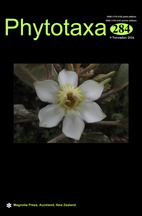Abstract
Miliusa Leschenault ex A. de Candolle (1832: 213) is a Paleotropical genus in the family Annonaceae with about 60 species distributed mostly to the Austral-Asiatic region, ranging from India, Sri Lanka, Bhutan, Bangladesh, Myanmar, Thailand, Indonesia, Malay Islands, Philippines, Papua New Guinea to Australia and New Zealand (Mols & Keßler 2003,Chaowasku & Keßler 2013, Chaowasku et al. 2013). According to molecular phylogenetic analysis, the genus is placed in subfamily Malmeoideae, tribe Miliuseae (Chatrou et al. 2012). Thailand and India are considered as the centres of diversity for Miliusa with more than twenty species each (Mols & Keßler 2003, Chaowasku & Keßler 2013, Chaowasku et al. 2013, Turner 2015). A total of 23 species and one variety of the genus are so far recorded from India (Mitra 1993, Karthikeyan et al. 2009, Turner 2015, Page & Nerlekar 2016, Page et al. 2016, Josekutty et al. 2016, Karuppusamy & Richard 2016). Among these, 15 species and one variety are reported from the Western Ghats of India. Except for four species, namely M. indica Leschenault ex A. de Candolle (1832: 213), M. horsfieldii (Bennett 1840: 165) Pierre (1881: 38), M. tomentosa (Roxburgh: 1795: 31. t. 35.) Sinclair (1955: 378) and M. velutina (Dunal) Hooker & Thomson (1855: 151), all are endemic to that region (Nayar et al. 2014). As a whole, the genus is phytogeographically significant to Western Ghats with 71% of the species being endemics, which makes the genus more important from conservation point of view.

